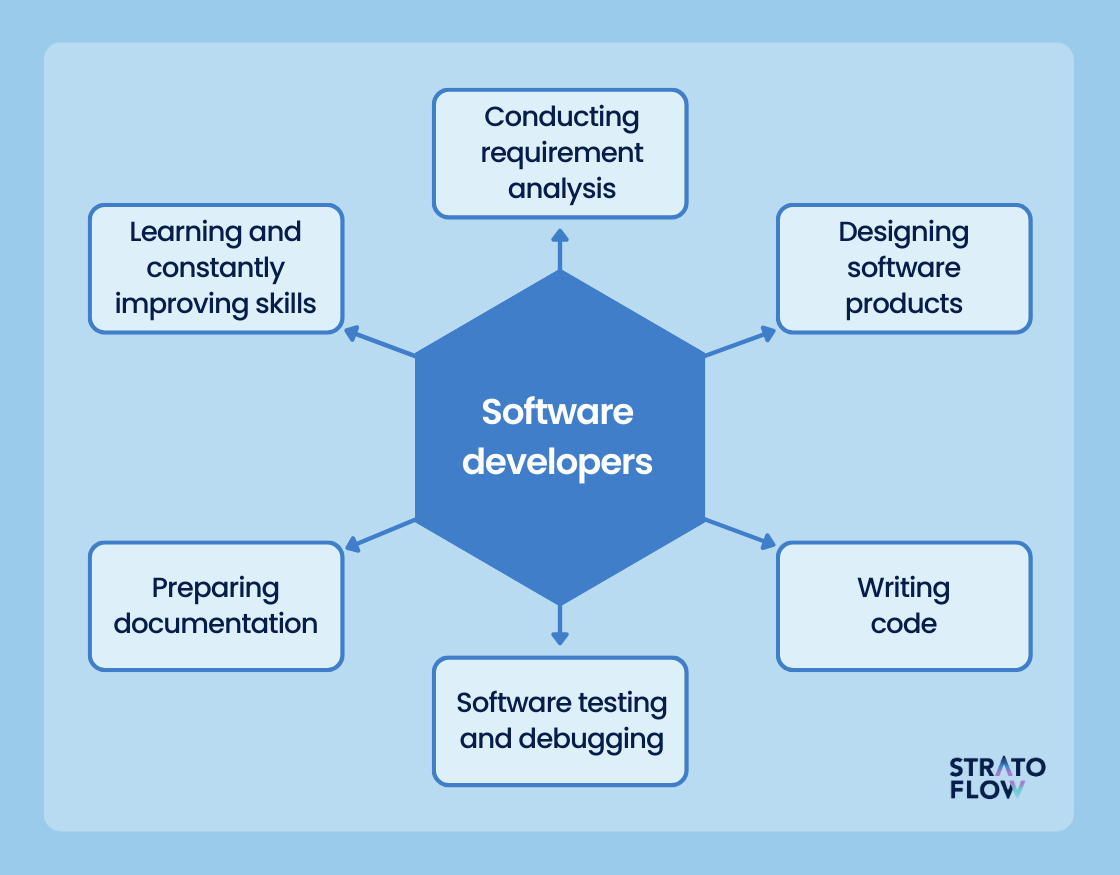The Advantages of a Dedicated Development Team in an Open Market
The Advantages of a Dedicated Development Team in an Open Market
Blog Article
Committed Developers vs. In-House Teams: Which Is Right for You?
The decision in between making use of devoted designers and maintaining an internal team is a considerable one that can impact the trajectory of your projects and total organization method. On the other hand, internal groups contribute to a natural business society and a nuanced understanding of lasting objectives.
Understanding Dedicated Designers
The expanding demand for specialized skills in the tech sector has caused the development of dedicated programmers as a viable remedy for numerous companies. These experts are normally contracted on a job basis, allowing firms to leverage certain know-how without the lasting commitment connected with full time hires. Dedicated designers are usually embedded within a client's team, providing versatility and scalability to meet job needs.
This design enables organizations to access a global ability pool, which is particularly useful in a rapidly advancing technological landscape. Devoted programmers can be sourced from various geographical locations, making sure that firms can find the right ability established at affordable prices. They frequently bring a wealth of experience and understanding, having dealt with varied projects throughout different markets.
Additionally, dedicated designers can focus solely on the jobs handy, boosting productivity and effectiveness. They are equipped to incorporate flawlessly into existing workflows, teaming up carefully with internal groups to achieve job purposes. This method not just decreases the worry of employment and training but also permits companies to stay dexterous, adjusting quickly to altering market demands and technical innovations.
Benefits of In-House Teams

Moreover, internal groups tend to have a deeper understanding of the business's goal, values, and objectives. This placement can boost worker involvement and motivation, as staff member really feel a lot more connected to their job and the organization's success. In addition, having a committed in-house team permits much better placement of methods and objectives, as these members are continually focused on the business's top priorities.
In-house teams also facilitate quicker decision-making processes, as they can react more quickly to adjustments and obstacles. The well established relationships and experience with business procedures permit streamlined process and lowered miscommunication. Inevitably, the combination of a cohesive culture, positioning with business goals, and reliable communication makes internal groups a valuable property for many organizations, particularly those looking to grow long-lasting development and innovation.
Cost Factors To Consider
When examining expense considerations, both dedicated designers and internal teams present unique financial implications for organizations. Involving specialized developers normally involves a pay-per-project or per hour price model, which can be affordable for organizations with fluctuating job demands. Home Page This technique permits versatility in scaling resources up or down, guaranteeing that firms only pay for the solutions they require.
On the other hand, in-house groups entail fixed expenses, consisting of incomes, advantages, and overhead costs such as workplace and equipment. While this design uses greater control and immediate accessibility of resources, it might bring about higher lasting costs, particularly if the work does not justify a permanent personnel.
Furthermore, companies must consider the covert prices connected with employment and training of internal employees, which can better strain budget plans. In some instances, the moment and resources invested in taking care of an in-house group can interfere with the organization's core organization purposes.

Project Management and Adaptability
Job monitoring and versatility are essential variables that affect the selection in between in-house groups and specialized designers. Dedicated programmers commonly supply a high level of versatility, allowing companies to range resources up or down based upon job demands. This agility can be specifically helpful for organizations experiencing fluctuating work or those seeking to introduce quickly. Committed teams often have actually established procedures for handling projects effectively, leveraging certain methods like Agile or Scrum, which help with repetitive development and adaptability.

Eventually, the choice between specialized developers and internal teams depends upon the preferred degree of adaptability and the specific project monitoring demands. Companies should examine their functional characteristics, project complexity, and resource availability to establish which option straightens best with their critical objectives.
Making the Right Choice
Picking the ideal growth method-- specialized developers or internal teams-- needs a careful assessment of numerous factors that line up with a company's calculated objectives. Alternatively, internal groups can offer far better connection and assimilation with existing workers.
Following, examine your spending plan. Committed designers often present an affordable solution for short-term jobs, while internal groups may incur greater long-term expenses as a result of wages, advantages, and overhead expenses. Analyze the degree of control and cooperation preferred; internal groups commonly cultivate stronger communication and alignment with company society.
If immediate outcomes are essential, devoted programmers can be onboarded quickly, whereas building an in-house group takes time for employment and training. If constant growth is important, spending in an internal team might produce better returns over time.
Verdict
In final thought, More Bonuses the decision between committed developers and in-house teams rests on project demands and business goals. Devoted designers give flexibility and specific proficiency, making them suitable for temporary initiatives. Alternatively, internal groups grow a cohesive society and much deeper positioning with long-term goals. Careful examination of spending plan restraints, task timelines, and preferred control levels is important for figuring out one of the most proper technique, guaranteeing placement with strategic priorities and functional effectiveness.
The choice between making use of specialized designers and preserving an in-house group is a significant one that can impact the trajectory of your tasks and total company approach.Task management and versatility are important variables that affect the option in between specialized developers and in-house teams. software development partner.In comparison, in-house teams might excel in keeping a consistent job management structure due to their knowledge with the organization's check these guys out society and lasting objectives. Devoted developers usually provide a cost-efficient option for temporary projects, while internal groups might incur higher long-term expenses due to incomes, benefits, and overhead expenses.In conclusion, the decision in between in-house teams and devoted designers hinges on task requirements and organizational goals
Report this page